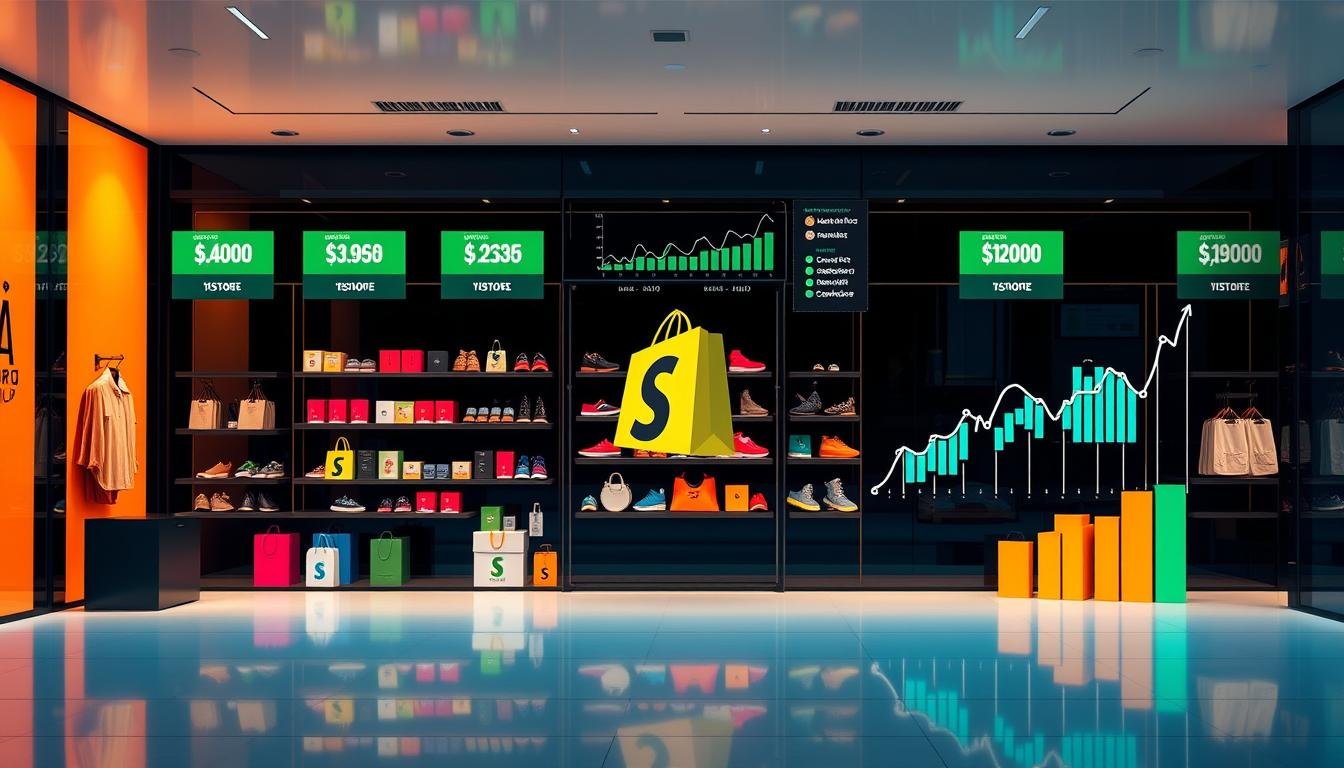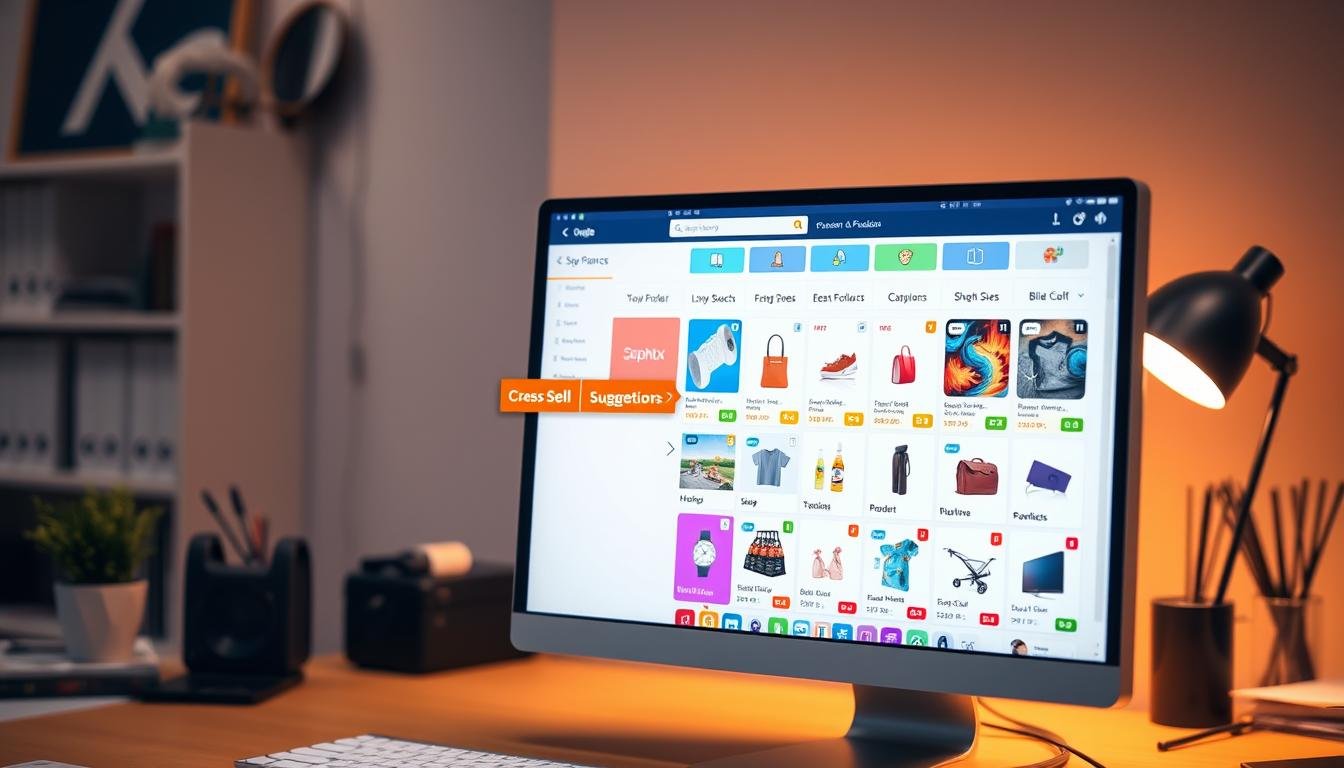Did you know that a 73% increase in online sales can happen with the right Shopify pricing strategy? As a Shopify store owner, knowing how to price your items can really boost your earnings. With different pricing models like cost-plus and dynamic pricing, setting the right prices is key to success.
Whether you’re new to Shopify or have been around for a while, this guide helps you set prices that meet your business goals. It also shows how to make your customers more likely to buy.
Plus, you’ll learn about apps like the MVR Free Shipping Bar & Upsell to make your brand stand out and increase sales.
Key Takeaways
- Implementing a strong Shopify pricing strategy can boost online sales by up to 73%.
- Understanding various ecommerce pricing models helps align your pricing with business goals.
- Cost-plus, competitive, value-based, and dynamic pricing are essential Shopify strategies.
- Tools like the MVR Free Shipping Bar & Upsell app can enhance sales and customer experience.
- Strategic pricing positively impacts consumer perception and purchasing behavior.
1. Cost-Plus Pricing for Consistent Profits
Cost-plus pricing is a simple way to make sure you make a profit. It adds a fixed percentage to all costs like materials, labor, and shipping. This helps businesses on Shopify stay steady, even when the market changes.

This method helps keep profit margins stable. Shopify store owners can use a profit margin calculator to find the right markup. This makes it easier to grow your business with clear pricing.
But, cost-plus pricing might not be the best for changing markets. It doesn’t consider what competitors charge or what customers think. Still, it’s good for keeping profits steady, especially for those who want something simple.
2. Competitive Pricing: Staying Ahead of the Competition
Using a competitive pricing strategy on Shopify means looking closely at what others charge. This makes your store more appealing to customers while keeping profits high. Keeping an eye on market trends and what others are charging helps your store stand out in the fast-paced world of online shopping.
Analyzing Competitors’ Prices
Shopify offers powerful tools to analyze competitor prices. These tools help you see how others price similar items. Keeping this data up to date lets you quickly adjust to market changes. It’s smart to watch price trends in your area and set your prices based on that.
Adjusting Your Prices Accordingly
After you’ve looked at competitor prices, it’s time to adjust yours. You might lower or raise your prices based on quality and brand value. Finding the right balance between being competitive and unique helps your store thrive.
Remember, the market is always changing. Keep tweaking your pricing to match demand and supply changes. This keeps your store at the forefront of the competition.
3. Utilizing Value-Based Pricing
Value-based pricing lets your Shopify store set prices based on what customers think your products are worth. This is great for unique or high-value items, as it lets you charge more. It’s a smart way to make more money.
Using this pricing method means you focus on what customers are willing to pay. It’s different from just adding costs to your prices. You need to know your customers well and watch for changes in the market.
4. Dynamic Pricing: Adapting to Market Conditions
In today’s competitive market, a dynamic pricing strategy is key for your Shopify store’s success. By adjusting prices based on real-time data, you can optimize them effectively.
Leveraging Market Data for Pricing Adjustments
To use a dynamic pricing strategy well, you must tap into market data. This means analyzing customer demand and competitor prices in real-time. With AI dynamic pricing, you can automatically tweak your prices to boost profits.
- Customer Demand: Watch buying patterns to raise prices when demand is high and lower them when it’s low.
- Competitor Pricing: Keep an eye on what competitors charge. Adjust your prices to stay competitive yet profitable.
Examples of Dynamic Pricing
Many companies have found success with dynamic pricing. For example, Uber raises fares during busy times. E-commerce sites can use AI to adjust prices based on stock levels and sales speed.
| Scenario | Approach | Benefits |
|---|---|---|
| High-Demand Periods | Increase Prices | Maximize Revenue |
| Low-Demand Times | Offer Discounts | Boost Sales |
| Competitor Promotion | Adjust Price Accordingly | Maintain Market Share |
For those wanting to improve their Shopify store with dynamic pricing, check out the MVR Free Shipping Bar & Upsell app. It helps with upselling, geo-targeting, and offers design options to fit your brand. It supports price optimization through progress bars toward set goals.
5. Discount Pricing for Increased Traffic
Using discount pricing is a smart way to get more people to visit your store and clear out inventory. Sales, coupons, and seasonal prices can draw in a lot of customers. But, it’s important to plan these promotions well to avoid hurting your brand’s image.
For instance, setting up discounts for holidays or special events can make people feel like they need to buy now. Giving out limited-time coupons can also get people to shop right away.
Data from a recent study by McKinsey reveals that well-executed discount pricing strategies can boost a retailer’s traffic by up to 20% during promotional periods.
But, there’s a catch. Using discounts too much can make people think your products are always cheap. This can make them value your products less.

The MVR Free Shipping Bar & Upsell app on Shopify can help with your discount pricing. It’s known for upselling, targeting specific areas, and having many design options. It also tracks your progress, helping to increase the average order value and sales.
Think about these different ways to offer discounts to make your strategy better:
- Flash Sales
- Volume Discounts
- Bundled Offers
Here’s a look at some common discount pricing strategies:
| Strategy Type | Implementation Frequency | Customer Impact |
|---|---|---|
| Seasonal Pricing | Occasional | Boosts short-term sales |
| Coupons | Frequent | Drives immediate purchases |
| Volume Discounts | Regular | Encourages bulk buying |
Using a mix of discount strategies can really help bring in more customers. But, it’s key to do it in a way that keeps your brand’s value high. Discounting can work well if you plan it carefully as part of your overall pricing strategy.
6. Effective Use of Penetration Pricing
Penetration pricing is a smart move for businesses entering a new market. By starting with low prices, companies can quickly win over more customers. This helps them gain a big share of the market and build a strong brand.
But, it’s important to think ahead to make sure the business stays profitable in the long run.
Breaking Into a New Market
For new players, penetration pricing is a great way to stand out. Lower prices than the competition attract price-sensitive shoppers. This can quickly pull customers away from other brands and kickstart sales.
Yet, it’s key to have a plan to move to higher prices later. This avoids financial trouble and keeps the business from always needing to cut prices.
Strategies for Long-Term Profitability
To keep profits up while using penetration pricing, businesses should:
- Slowly raise prices once they have loyal customers.
- Show how their product is worth the higher price.
- Use upselling tools like MVR Free Shipping Bar & Upsell to improve the customer experience.
These steps are vital to stay competitive without losing profit margins. By starting with low prices and adjusting them wisely, companies can keep their success going strong.
| Key Factors of Penetration Pricing | Benefits | Challenges |
|---|---|---|
| Initial Low Price Points | Attracts Customers | Risk of Long-Term Low Prices |
| Market Share Growth | Builds Brand Awareness | Difficulty in Raising Prices |
| Customer Loyalty | Establishes Early Loyalty | Balancing Short-Term Profits |
The Role of Shopify Pricing Strategy in Business Growth
A good Shopify pricing strategy is key for growing your business. It affects sales, profits, getting new customers, and how you stand in the market. To grow well, you need to mix data analysis with knowing what customers want.
Using scalable pricing models is a smart move. These models let you change prices as your business grows. This keeps you competitive and relevant.
Adding practical tools to your pricing strategy can help your business grow. For example, apps like the MVR Free Shipping Bar & Upsell can help upsell. It has features like geo-targeting and design options to boost sales.
Loyalty programs are also important for keeping customers coming back. They can make customers feel valued and increase their spending. This helps your business grow over time.
In short, combining smart pricing strategies with technology can lead to success. It’s about being flexible, informed, and using tools that fit your goals. Always watch market trends and what customers like.
Conclusion
Creating a winning Shopify pricing strategy is complex. It involves looking at different models, market trends, and what customers think. A thorough Shopify pricing review can show you the best ways to grow your business.
Each pricing method, like cost-plus or value-based, has its own role. Fine-tuning these strategies is key to success. It helps you set the right prices for your online store.
Shopify offers various pricing plans to fit your business needs. Using these plans and adjusting to market changes is crucial. This approach helps you sell more online.
Using discount or penetration pricing can boost your store’s growth. It’s important to use your chosen strategy wisely. This will help your store grow over time.
Consider using apps like the MVR Free Shipping Bar & Upsell to improve your sales. This app helps upsell and target customers based on their location. It also lets you customize its look to match your brand.
Its progress bar can increase your average order value (AOV) and sales. This supports your pricing strategy. Always keep analyzing, adapting, and thinking creatively in the ever-changing world of eCommerce.


